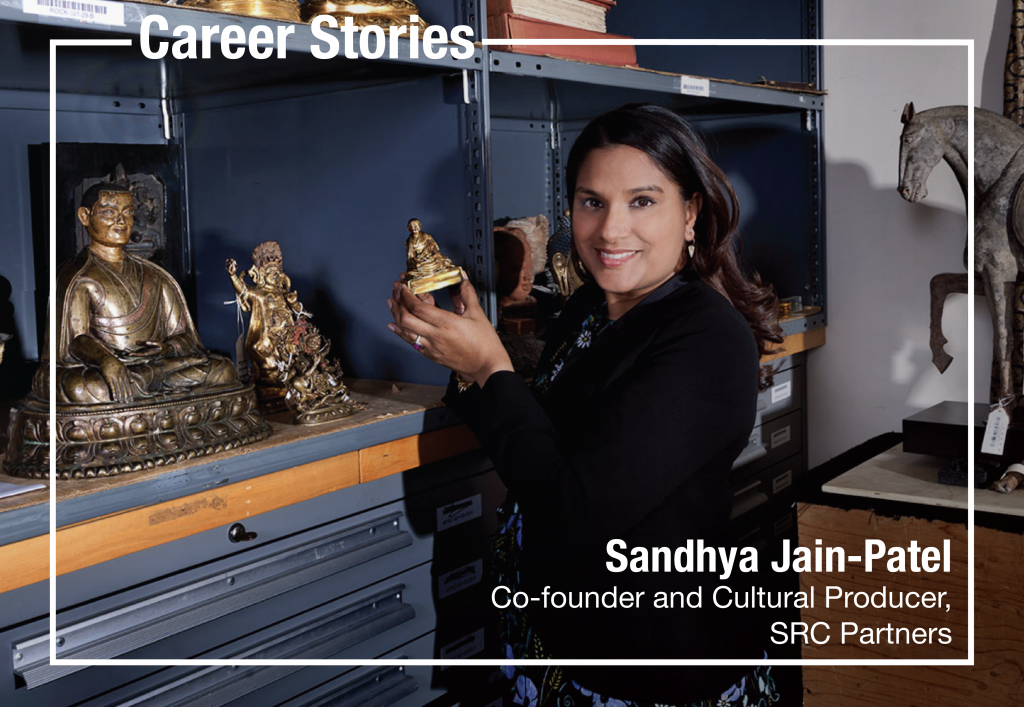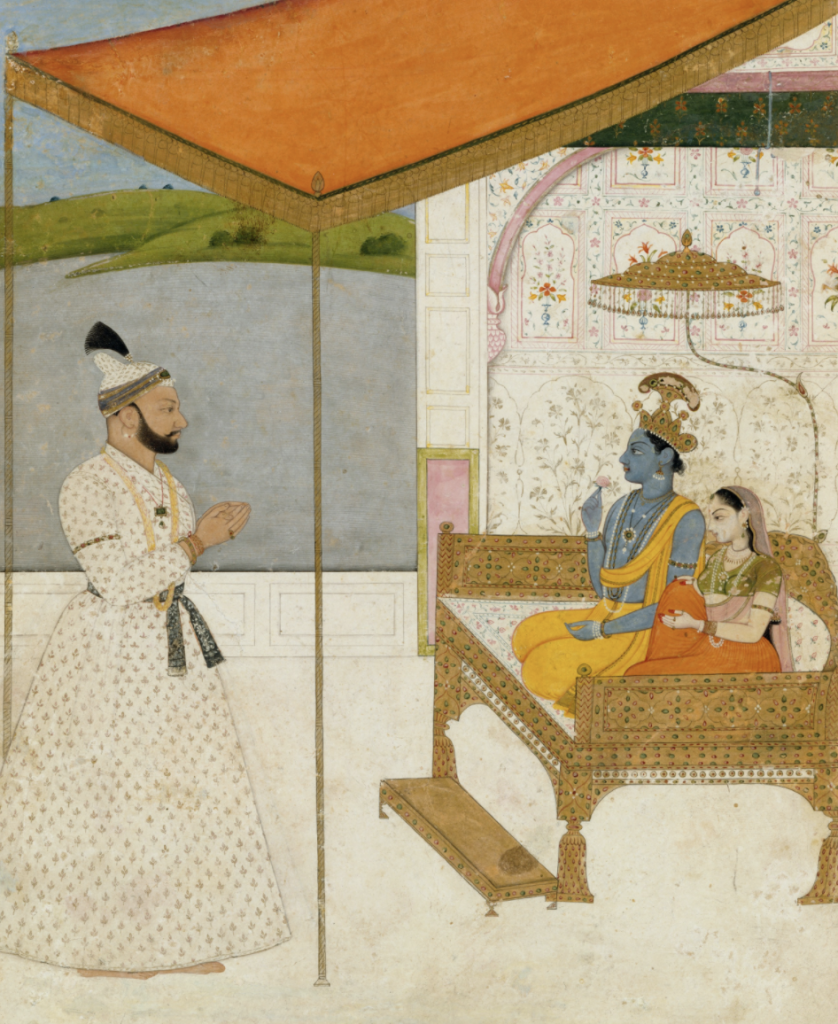Career Stories
Auctioneer and Diversity Leader Sandhya Jain-Patel on Her Greatest Moments at Christie’s and Why Equity in the Art World Is Essential
The cultural consultant talks career, media representation, and how she stays motivated.

The cultural consultant talks career, media representation, and how she stays motivated.

No two paths to a successful career in the art world look the same. In our series, “Career Stories,” we’re checking in with some of the high-powered people in the art industry to hear about everything from their first brushes with art, to the advice they would give their younger selves.
For Sandhya Jain-Patel, a career in the arts was purely serendipitous. “I double majored in biology and art history in undergrad, fully intending to pursue medicine,” she says. It wasn’t until taking a seminar on Caravaggio her senior year of college that she discovered the field of conservation.
“When [the professor] showed us an x-ray of The Martyrdom of Saint Matthew, I was thunderstruck,” Sandhya says. “I had no idea scientific technology was used in the process of examining artworks. I decided I wanted to be whomever did that.”
After earning MA degrees in microbiology and molecular genetics, art history, and fine-arts conservation, she was awarded a Fulbright Scholarship to study the conservation of Indian court paintings. She later completed a 13-year tenure at Christie’s, and most recently co-founded SRC Partners, a production firm that specializes in diversity, inclusion, and equity in the arts.
Read on to hear about Sandhya’s proudest achievements, greatest challenges, and why some call her a “Jain” of all trades. And click here to register for our next Artnet Talks on January 26, which will feature Sandhya and fellow art-world experts.
At Christie’s, you worked as the head of the Indian, Himalayan, and Southeast Asian art department. During your tenure, the department set multi-million dollar records. What was your proudest accomplishment?
So many to choose from! Working at Christie’s was a special experience and I’m grateful to have met the best specialists and collectors in the world while there. Aside from being instrumental in securing the estates of Doris Wiener and Robert Hatfield Ellsworth, and selling Henri Pinault a sculpture of Ganesha in my first sale, one of my proudest moments was when I reidentified a lost painting by Nainsukh of Guler, and then proceeded to sell it to one of the top collectors of Indian court paintings for an unprecedented sum. While all of the artworks I handled are dear to me, that one has a special place in my heart.
These days, you’re providing cultural production services through your firm, SRC Partners. What led to its founding?
SRC Partners was founded on the principles of diversity, inclusivity, and equity, which have long been missing from the art world. During my studies, while working, even now when interfacing with arts organizations, I am often the only person of color in the room. I am not the first or only one to recognize this, nor the fact that women of any color rarely rise above a certain level in such organizations. And frankly, I’m over it. During my wonderful but brief role as executive director of Wrightwood 659, I relearned that I am an intelligent and bad-ass boss, and that I have the cross-functional skills to helm almost any organization. The “Partners” part of our name is to bring in other BIPOC, women, and underrepresented communities to our projects, to support them.

The Martyrdom of Saint Matthew by Caravaggio. After seeing an x-ray of this painting, Sandhya says she was inspired to pursue a career in the arts.
SRC Partners offers services from conception all the way through post-production and marketing. Can you tell us more about the cultural production process?
It completely depends on the project. Fine art exhibitions, performing arts, film, TV, books, other media—they all have different production needs. Ultimately the common big-picture questions are: how can the story be written so the subjects or characters are fully fleshed out? Are there misconceptions or tropes that are being unwittingly employed, and how can that be addressed? How can the material be positioned to a diverse audience? How is the content being designed to provide these diverse segments with equitable access to it? Often, these questions need to start being addressed in conception and development, to avoid costly backtracking when in the production or editing phase.
What is something you think people get wrong about cultural representation in art, film, and TV?
Oh goodness, where to begin? Well, basically, that a person who is not of that culture knows enough to represent it authentically and with nuance without consulting the experts. And that if one creator is from an underrepresented community, they are able to speak on behalf of all underrepresented communities. SRC Partners have a ton of resources for content creators on how to avoid making mistakes, and we’re adding more all the time. Above all, I encourage everyone to do the work towards educating themselves on their own privilege in comparison to others, and how each of us can hold the door open wider to let others in. Jennifer Brown has been my guru in this area; her website has a ton of information, and her book, How to Be An Inclusive Leader, is a must-read.
What has been the greatest challenge you have faced thus far?
Learning to let go of perfection. I have certain goals I want to hit, whether it’s building our client relationships, our marketing, PR, social media presence, or all the projects we want to do. Plus, I am a lifelong learner and have assigned myself the Sisyphean task of consuming innumerable books, TV shows, movies, podcasts, and other media. All on top of parenting two school-aged children in a pandemic. It’s an understatement to say that it’s a lot, and since I demand excellence of myself and others, there’s not enough time to do it all. As they say in art conservation: “Better is the enemy of good.” So I’m learning to be satisfied with “good enough.”

Detail shot of a painting by artist Nainsukh in the collection of the Metropolitan Museum of Art. While at Christie’s, Sandhya re-identified a lost painting by the Indian master.
Outside of the professional sphere, you were a founding member of a professional dance troupe, Bollywood Axion, and you launched Xari Couture, a private fashion label. How have these creative endeavors influenced you in your career?
Those two endeavors were part of my life shortly after I returned from India, and I wanted to include and enlarge that part of my life here in New York City. Through music, dance, tangible creation, design, and studying the art at Christie’s, I was fortunate to keep learning about South and Southeast Asian arts, the diaspora, and their cultural exchange with the rest of the world. By de-centering the “pale, male, and stale” narrative from my education and experience, I gained and continue to gain a wider and global perspective which have ultimately shaped my passion for supporting the creative output of BIPOC, LGBTQIA+, disabled, and other other underrepresented communities.
While balancing so many different interests and endeavors, how do you stay motivated?
While these interests seem different or disparate from the surface, these endeavors have all dovetailed to provide me, a woman of color, with the opportunity to meld my interests in art and science towards a newly defined career of cultural production. The training in scientific rigor translates to strategic thinking and problem-solving skills, and the art background keeps me recognizing and staying curious about the art found everywhere, from the subatomic to the universal levels and beyond. I suppose you can say I’m a “Jain” of all trades, and this also allows me to be able to converse with most people on a reasonably intelligent and thoughtful level. That, and trying to read the New Yorker every week.
Do you have a mentor?
I’m fortunate to have a handful of carefully chosen people with whom I discuss my career. Everyone, especially a woman and anyone of color, needs to have mentors and sponsors, and ideally more than one of each. At Christie’s I had two important mentors, Paul Provost and Sandy Cobden, both of whom have different intersectionalities than I do, but who could understand how I sometimes felt marginalized. They were instrumental in getting me a seat at the table when I didn’t know how. Now, I’m a member of Chief, the clubhouse for executive and c-suite women, where I can tap a network from coast-to-coast for advice.
What is the best piece of advice you have ever received?
Judith Eisenberg told me: “Don’t ‘should’ on yourself.” If you catch yourself saying, “I should do…” then stop and sit with that for a moment. Why should you do it? Why don’t you want to do it? Is there something else you can do to take care of your own social-emotional health first? You can’t show up for others if your bucket is empty, so make sure to take care of yourself. I especially learned this lesson after having children; it is my responsibility to be emotionally content, stable, and satisfied before I can help them with that. That goes for being on teams, not just leading them. You can’t give your best if you don’t have your best to give.
Don’t miss Sandhya and other industry power-players at “Artnet Talks: How to Tackle Career Challenges in the 2021 Art World” on Tuesday, January 26, at 9:30am EST. Click here to learn more.